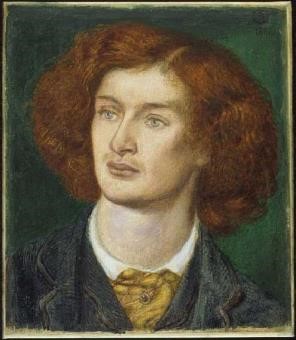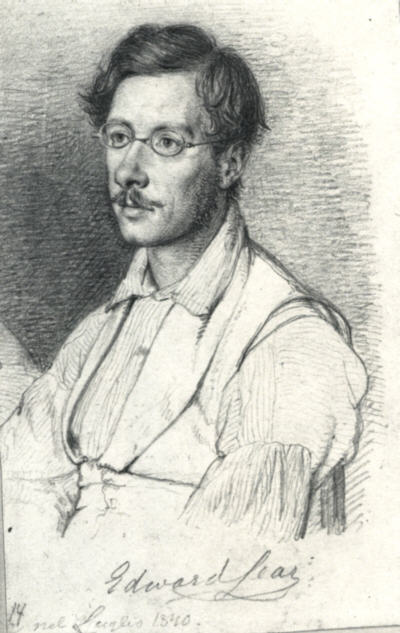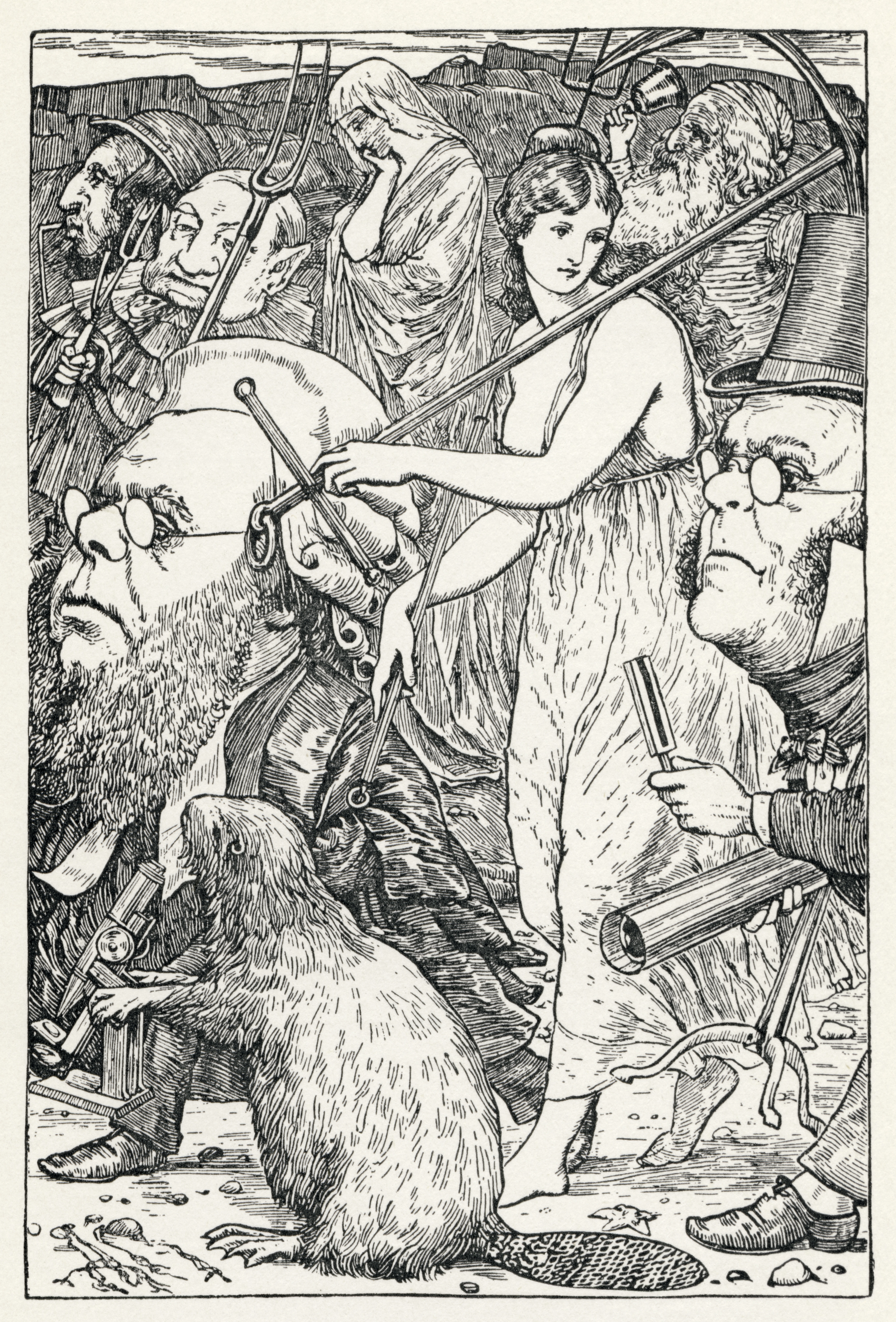|
Anapaest
An anapaest (; also spelled anapæst or anapest, also called antidactylus) is a metrical foot used in formal poetry. In classical quantitative meters it consists of two short syllables followed by a long one; in accentual stress meters it consists of two unstressed syllables followed by one stressed syllable. It may be seen as a reversed dactyl. This word comes from the Greek , ''anápaistos'', literally "struck back" and in a poetic context "a dactyl reversed". Because of its length and the fact that it ends with a stressed syllable and so allows for strong rhymes, anapaest can produce a very rolling verse, and allows for long lines with a great deal of internal complexity. Apart from their independent role, anapaests are sometimes used as substitutions in iambic verse. In strict iambic pentameter, anapaests are rare, but they are found with some frequency in freer versions of the iambic line, such as the verse of Shakespeare's last plays, or the lyric poetry of the 19th century ... [...More Info...] [...Related Items...] OR: [Wikipedia] [Google] [Baidu] |
Iambic Pentameter
Iambic pentameter () is a type of metric line used in traditional English poetry and verse drama. The term describes the rhythm, or meter, established by the words in that line; rhythm is measured in small groups of syllables called "feet". "Iambic" refers to the type of foot used, here the iamb, which in English indicates an unstressed syllable followed by a stressed syllable (as in ''a-bove''). "Pentameter" indicates a line of five "feet". Iambic pentameter is the most common meter in English poetry. It was first introduced into English by Chaucer in 14th century on the basis of French and Italian models. It is used in several major English poetic forms, including blank verse, the heroic couplet, and some of the traditionally rhymed stanza forms. William Shakespeare famously used iambic pentameter in his plays and sonnets, John Milton in his ''Paradise Lost'', and William Wordsworth in ''The Prelude''. As lines in iambic pentameter usually contain ten syllables, it is consider ... [...More Info...] [...Related Items...] OR: [Wikipedia] [Google] [Baidu] |
The Wanderings Of Oisin
''The Wanderings of Oisin'' ( ) is an epic poem published by William Butler Yeats in 1889 in the book ''The Wanderings of Oisin and Other Poems''. It was his first publication outside magazines, and immediately won him a reputation as a significant poet. This narrative poem takes the form of a dialogue between the aged Irish hero Oisín and St. Patrick, the man traditionally responsible for converting Ireland to Christianity. Most of the poem is spoken by Oisin, relating his 300-year sojourn in the isles of Faerie. Oisin was not a popular poem with modernist critics like TS Eliot. However, Harold Bloom defended this poem in his book-length study of Yeats, and concludes that it deserves reconsideration. Story The fairy princess Niamh fell in love with Oisin's poetry and begged him to join her in the immortal islands. For a hundred years he lived as one of the Sidhe, hunting, dancing, and feasting. At the end of this time he found a spear washed up on the shore and grew sad, re ... [...More Info...] [...Related Items...] OR: [Wikipedia] [Google] [Baidu] |
Trimeter
In poetry, a trimeter (Greek for "three measure") is a metre of three metrical feet per line. Examples: : When here // the spring // we see, : Fresh green // upon // the tree. See also * Anapaest * Dactyl * Tristich * Triadic-line poetry Triadic-line poetry or stepped line is a long line which "unfolds into three descending and indented parts". Created by William Carlos Williams, it was his "solution to the problem of modern verse" and later was also taken up by poets Charles Tomlin ... References Types of verses {{Poetry-stub ... [...More Info...] [...Related Items...] OR: [Wikipedia] [Google] [Baidu] |
Limerick (poetry)
A limerick ( ) is a form of verse, usually humorous and frequently rude, in five-line, predominantly trimeter with a strict rhyme scheme of AABBA, in which the first, second and fifth line rhyme, while the third and fourth lines are shorter and share a different rhyme. The following example is a limerick of unknown origin: The form appeared in England in the early years of the 18th century. It was popularized by Edward Lear in the 19th century, although he did not use the term. Gershon Legman, who compiled the largest and most scholarly anthology, held that the true limerick as a folk form is always obscene, and cites similar opinions by Arnold Bennett and George Bernard Shaw, describing the clean limerick as a "periodic fad and object of magazine contests, rarely rising above mediocrity". From a folkloric point of view, the form is essentially transgressive; violation of taboo is part of its function. Form The standard form of a limerick is a stanza of five lines, with the ... [...More Info...] [...Related Items...] OR: [Wikipedia] [Google] [Baidu] |
Algernon Charles Swinburne
Algernon Charles Swinburne (5 April 1837 – 10 April 1909) was an English poet, playwright, novelist, and critic. He wrote several novels and collections of poetry such as ''Poems and Ballads'', and contributed to the famous Eleventh Edition of the ''Encyclopædia Britannica''. Swinburne wrote about many taboo topics, such as lesbianism, sado-masochism, and anti-theism. His poems have many common motifs, such as the ocean, time, and death. Several historical people are featured in his poems, such as Sappho ("Sapphics"), Anactoria ("Anactoria"), and Catullus ("To Catullus"). Biography Swinburne was born at 7 Chester Street, Grosvenor Place, London, on 5 April 1837. He was the eldest of six children born to Captain (later Admiral) Charles Henry Swinburne (1797–1877) and Lady Jane Henrietta, daughter of the 3rd Earl of Ashburnham, a wealthy Northumbrian family. He grew up at East Dene in Bonchurch on the Isle of Wight. The Swinburnes also had a London home at Whitehall G ... [...More Info...] [...Related Items...] OR: [Wikipedia] [Google] [Baidu] |
Anapestic Tetrameter
Anapestic tetrameter is a poetic meter that has four anapestic metrical feet per line. Each foot has two unstressed syllables followed by a stressed syllable. It is sometimes referred to as a "reverse dactyl", and shares the rapid, driving pace of the dactyl. Description and uses Anapestic tetrameter is a rhythm well suited for comic verse, and prominent examples include Clement Clarke Moore's "A Visit from St. Nicholas" and the majority of Dr. Seuss's poems. When used in comic form, anapestic tetrameter is often highly regular, as the regularity emphasizes the breezy, melodic feel of the meter, though the initial unstressed beat of a line may often be omitted. Non comic usage The verse form is not solely comic. Lord Byron's The Destruction of Sennacherib is in anapestic tetrameter. Eminem's hit song " The Way I Am" uses the meter for all parts of the song except the chorus. In non-comic works, it is likely that anapestic tetrameter will be used in a less regular manner, with c ... [...More Info...] [...Related Items...] OR: [Wikipedia] [Google] [Baidu] |
Old Possum's Book Of Practical Cats
''Old Possum's Book of Practical Cats'' (1939) is a collection of whimsical light poems by T. S. Eliot about feline psychology and sociology, published by Faber and Faber. It serves as the basis for Andrew Lloyd Webber's 1981 musical '' Cats''. Eliot wrote the poems in the 1930s and included them, under his assumed name "Old Possum", in letters to his godchildren. They were collected and published in 1939, with cover illustrations by the author, and quickly re-published in 1940, illustrated in full by Nicolas Bentley. They have also been published in versions illustrated by Edward Gorey (1982), Axel Scheffler (2009) and Rebecca Ashdown (2014). Contents The contents of ''Old Possum's Book of Practical Cats'', along with the names of the featured cats where appropriate, are: * "The Naming of Cats" * "The Old Gumbie Cat" ( Jennyanydots) * "Growltiger's Last Stand" * "The Rum Tum Tugger" * "The Song of the Jellicles" * "Mungojerrie and Rumpleteazer" * "Old Deuteronomy" * " (Of ... [...More Info...] [...Related Items...] OR: [Wikipedia] [Google] [Baidu] |
The Book Of Nonsense
''The'' () is a grammatical article in English, denoting persons or things already mentioned, under discussion, implied or otherwise presumed familiar to listeners, readers, or speakers. It is the definite article in English. ''The'' is the most frequently used word in the English language; studies and analyses of texts have found it to account for seven percent of all printed English-language words. It is derived from gendered articles in Old English which combined in Middle English and now has a single form used with pronouns of any gender. The word can be used with both singular and plural nouns, and with a noun that starts with any letter. This is different from many other languages, which have different forms of the definite article for different genders or numbers. Pronunciation In most dialects, "the" is pronounced as (with the voiced dental fricative followed by a schwa) when followed by a consonant sound, and as (homophone of pronoun ''thee'') when followed by a v ... [...More Info...] [...Related Items...] OR: [Wikipedia] [Google] [Baidu] |
Edward Lear
Edward Lear (12 May 1812 – 29 January 1888) was an English artist, illustrator, musician, author and poet, who is known mostly for his literary nonsense in poetry and prose and especially his limerick (poetry), limericks, a form he popularised. His principal areas of work as an artist were threefold: as a draughtsman employed to make illustrations of birds and animals; making coloured drawings during his journeys, which he reworked later, sometimes as plates for his travel books; and as a (minor) illustrator of Alfred, Lord Tennyson's poems. As an author, he is known principally for his popular nonsense collections of poems, songs, short stories, botanical drawings, recipes and alphabets. He also composed and published twelve musical settings of Tennyson's poetry. Biography Early years Lear was born into a middle-class family at Holloway, London, Holloway, North London, the penultimate of 21 children (and youngest to survive) of Ann Clark Skerrett and Jeremiah Lear, a stoc ... [...More Info...] [...Related Items...] OR: [Wikipedia] [Google] [Baidu] |
The Hunting Of The Snark
''The Hunting of the Snark'', subtitled ''An Agony in 8 Fits'', is a poem by the English writer Lewis Carroll. It is typically categorised as a nonsense poem. Written between 1874 and 1876, it borrows the setting, some creatures, and eight portmanteau words from Carroll's earlier poem "Jabberwocky" in his children's novel ''Through the Looking-Glass'' (1871). The narrative follows a crew of ten trying to hunt the Snark, a creature which may turn out to be a highly dangerous ''Boojum''. The only crewmember to find the Snark quietly vanishes, leading the narrator to explain that the Snark was a Boojum after all. The poem is dedicated to young Gertrude Chataway, whom Carroll met at the English seaside town Sandown in the Isle of Wight in 1875. Included with many copies of the first edition of the poem was Carroll's religious tract, ''An Easter Greeting to Every Child Who Loves "Alice"''. ''The Hunting of the Snark'' was published by Macmillan in the United Kingdom in March 1876 ... [...More Info...] [...Related Items...] OR: [Wikipedia] [Google] [Baidu] |
Lewis Carroll
Charles Lutwidge Dodgson (; 27 January 1832 – 14 January 1898), better known by his pen name Lewis Carroll, was an English author, poet and mathematician. His most notable works are ''Alice's Adventures in Wonderland'' (1865) and its sequel ''Through the Looking-Glass'' (1871). He was noted for his facility with word play, logic, and fantasy. His poems ''Jabberwocky'' (1871) and ''The Hunting of the Snark'' (1876) are classified in the genre of literary nonsense. Carroll came from a family of high-church Anglicanism, Anglicans, and developed a long relationship with Christ Church, Oxford, where he lived for most of his life as a scholar and teacher. Alice Liddell, the daughter of Christ Church's dean Henry Liddell, is widely identified as the original inspiration for ''Alice in Wonderland'', though Carroll always denied this. An avid puzzler, Carroll created the word ladder puzzle (which he then called "Doublets"), which he published in his weekly column for ''Vanity Fair ( ... [...More Info...] [...Related Items...] OR: [Wikipedia] [Google] [Baidu] |
In The Aeroplane Over The Sea (song)
"In the Aeroplane Over the Sea" is the third song on the Neutral Milk Hotel album of the same name. Background and composition Bandleader Jeff Mangum wrote the song almost instantaneously while staying in Athens, Georgia with fellow Elephant 6 musicians. The song was written soon after Mangum became romantically involved with Laura Carter. While sitting in the yard of their Athens home, Mangum suddenly announced, "I got a song in my head!" and ran inside the house to play the song for the first time. The song makes a brief reference to Anne Frank, who is alluded to throughout the album. It is about a young man who realizes that one day he is going to die, and accepts the idea. "In the Aeroplane Over the Sea" is one of the more uplifting songs on the album despite having death as the subject material. Stewart Mason of AllMusic writes, "'In the Aeroplane Over the Sea' is almost giddy at the thought of eternal rest: 'When we meet on a cloud, I'll be laughing out loud' probably isn' ... [...More Info...] [...Related Items...] OR: [Wikipedia] [Google] [Baidu] |


.png)


